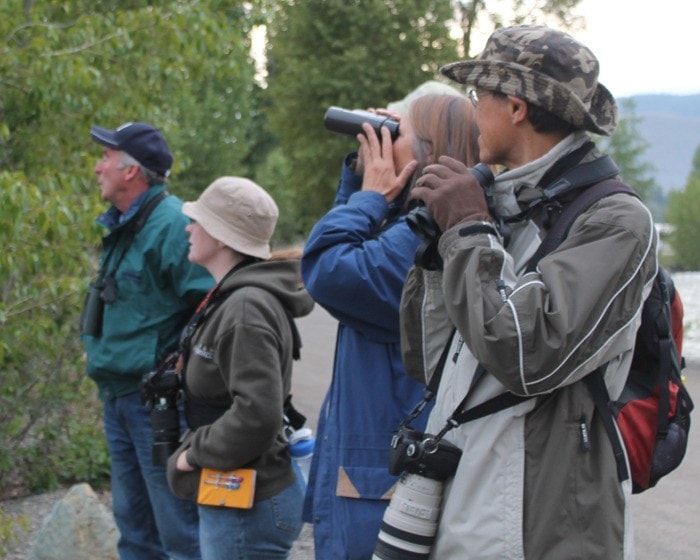The seemingly exotic names of birds I had never heard of echoed in the Riverside Centre as I met 70 other people to begin our field trip in search of sought after owls, swallows and tanagers in Princeton.
The 5 a.m. meeting time was way too early for me, but I didn’t get any sympathy for having only four hours sleep. The birders had been out until 1 a.m. the night before looking for the illusive Flammulated Owl near Copper Mountain.
I felt out of place among the birders decked-out in binoculars, long-range cameras and bird identification books. Nevertheless, we set out along the KVR trail to spot specific birds - many unique to the Okanagan area.
They spotted a couple of small Northern Ruffling Swallows in a tree a few minutes into our trip.
It takes a trained eye to see the camouflaged birds. I stared in the direction they were pointing, but couldn’t see anything.
“We can identify the birds by their sound. Sometimes it’s good enough just to hear them,” said the conference’s organizer Wayne Diakow.
Despite being blind to birds, I soon noticed a beaver floating down the rapid Similkameen River.
It stopped right in front of us, got half out of the water and waited. A beaver dam stood on the other side of the path, so we backed up and gave the surprisingly big rodent room to pass.
After the excitement we were back to bird watching.
The day before the group saw 62 birds, each precisely identified in a notebook for record purposes.

The birders had finely-tuned ears, able to hear sounds I would dismiss.
Another bird call caused us to stop while the group tried to figure out what they were hearing.
“That’s a Veery, that has to be a Veery,” said one birder who was confident in her answer.
The others agreed - this bird was easy to identify.
“It calls ‘veer-veer,’ that’s why it’s called a Veery,” the birders told me.
They said that as a novice bird watcher I wouldn’t be able to identify birds right away.
Naming birds can be an interesting topic, said Diakov, who has been looking for birds for 40 years.
The beautiful blue Lazuli bird we spotted is named after the colour of a semi-precious stone, another birder told me while showing me a photo in a book he brought along.
Next we heard a bird with a screeching-type voice.
The birders disagreement on the species was interrupted by a rooster loudly announcing the morning - a bird we weren’t interested in seeing.
The Clark’s Nutcracker - a friendly bird that tourists often feed by hand in Manning Park - was named after the 19th century transcontinental Lewis and Clark expedition.
Daikov first became interested in the world of birds when he helped his father in the once-popular hobby of collecting eggs in Alberta. At his father’s direction he would climb on trees to retrieve the eggs from their nests.
We later came across a Cat Bird - named so because of its cat-like mewing.
I would have thought it was a kitten trapped in the bushes if I hadn’t know better.
When the field trip was over, the birders headed back to the Riverside Centre to wrap up their weekend of conferences and guest speaker presentations, including topics about Similkameen-area birds, global warming and results of habitat impact studies.
